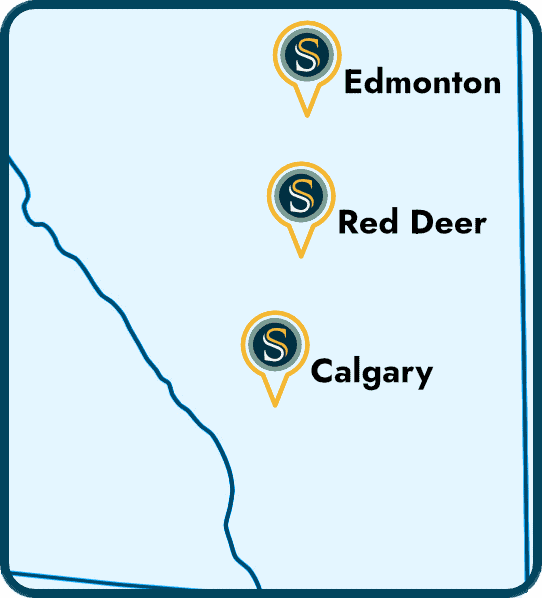
Introduction
Family violence, while decreasing in Canada according to Statistics Canada data, remains a significant concern in Canadian family law proceedings. Family violence extends beyond spousal relationships to encompass children who are often witnesses or direct victims of such conduct, creating substantial risks to their short and long-term mental health and development. This violence manifests in various forms including physical, verbal, and sexual violence, as well as emotional, psychological, and financial abuse. Whether occasional or chronic in nature, family violence represents a serious issue that Canadian courts are increasingly recognizing and addressing through legislative reforms and judicial decisions.
Legislative Framework
The 2021 Divorce Act Amendments
In 2021, Parliament enacted significant amendments to the federal Divorce Act, introducing comprehensive provisions addressing family violence and its impact on family law proceedings. These amendments represent a watershed moment in Canadian family law, formally recognizing the complex nature of family violence beyond traditional physical abuse.
The Act now defines family violence at section 2(1) as:
“any conduct… by a family member towards another family member, that is violent or threatening or that constitutes a pattern of coercive and controlling behaviour or that causes that other family member to fear for their safety or for that of another person – and in the case of a child, the direct or indirect exposure to such conduct.”
Best Interests of the Child Considerations
Under section 16(3) of the amended Divorce Act, courts must consider family violence as a primary factor in determining the best interests of the child, specifically examining:
- The nature, seriousness and frequency of the family violence
- Whether there is a pattern of coercive and controlling behaviour
- Whether the family violence is directed toward the child or another family member
- The physical, emotional and psychological harm or risk of harm to the child
- Any compromise to the safety of the child or other family member
- The appropriateness of making an order that would require persons in respect of whom the order would apply to cooperate on issues affecting the child
Understanding Coercive Control
Definition and Characteristics
Coercive control represents a sophisticated form of family violence that involves systematic patterns of behaviour designed to dominate and control another family member. The concept, while referenced in the 2021 Divorce Act amendments, has evolved through judicial interpretation and academic research.
An often-cited definition in Canadian family law, as established in Impact v. Impact, describes coercive control as “a continuing act or a pattern of acts of assault, threats, humiliation and intimidation or other abuse that is used to harm, punish or frighten.”
Legal scholars, including Glenda Lux, have noted that coercive control involves “a complex and often subtle set of patterned behaviours” that individually may appear minor but collectively create an atmosphere of control and fear. This “just enough” tactic makes coercive control particularly insidious and difficult to identify without careful analysis of behavioural patterns over time.
Judicial Recognition of Coercive Control Behaviours
Since the 2021 amendments, Canadian courts have provided increasingly specific guidance on behaviours constituting coercive control. In MAB v. MGC (2022 ONSC 7207), Justice Chappel identified several key examples of coercive and controlling behaviour, including:
- Engaging in verbal abuse, yelling, name-calling and insults
- Making numerous unsubstantiated allegations against the other party
- Unilaterally changing court-ordered parenting time terms without justification
- Regularly engaging in behaviour that undermines the other parent’s authority and alienates the child
- Making numerous unsubstantiated allegations of abuse to police, child protection authorities and other professionals
Recent Case Law Developments
Laurence v. Ross: Coercive Control in Relocation Cases
The 2025 Alberta case of Laurence v. Ross (2025 ABKB 131) demonstrates the evolving judicial approach to coercive control in family law proceedings. The case involved allegations of family violence and coercive control, including:
- Verbal abuse and demeaning behaviour (“repeatedly putting her down”)
- Controlling behaviour (tearing up meat in the applicant’s face)
- Exposing children to unsafe situations (throwing plates in front of the child)
In the subsequent costs decision (Laurence v. Ross, 2025 ABKB 292), Justice Loparco granted substantial solicitor-client costs, specifically noting the father’s coercive and controlling behaviour both pre-litigation and throughout the proceedings. The court identified ongoing reprehensible conduct including:
- Continued use of abusive language
- Creating financial burdens through non-disclosure
- Incomplete financial disclosure
- Late child support payments
- Requiring police intervention due to non-compliance
- Refusing to return the child, necessitating emergency court orders
- Providing misleading affidavit evidence
Impact on Children and Parenting Arrangements
Supreme Court of Canada Guidance
The Supreme Court of Canada has provided definitive guidance on the impact of family violence on children and parenting determinations. In Barendregt v. Grebliunas (2022 SCC 22), the Court unequivocally stated:
“The suggestion that domestic abuse or family violence has no impact on the children and has nothing to do with the perpetrator’s parenting ability is untenable. Research indicates that children who are exposed to family violence are at risk of emotional and behavioural problems throughout their lives. Harm can result from direct or indirect exposure to domestic conflicts, for example, by observing the incident, experiencing its aftermath, or hearing about it.”
Parenting Capacity Assessment
Courts must now consider how family violence impacts both the ability and willingness of perpetrators to care for and meet children’s needs. This assessment extends beyond direct violence against children to include:
- Indirect exposure through witnessing violence
- Emotional and psychological harm from living in violent environments
- The perpetrator’s demonstration of respect for court orders and co-parenting obligations
- The perpetrator’s willingness to acknowledge harm and seek appropriate intervention
Procedural and Evidentiary Considerations
Evidence of Coercive Control
Proving coercive control presents unique challenges given its often subtle and cumulative nature. Courts increasingly recognize that:
- Individual incidents may appear minor when viewed in isolation
- Pattern evidence requires careful chronological analysis
- Documentary evidence (texts, emails, financial records) can be crucial
- Expert evidence may be necessary to explain the dynamics of coercive control
Protective Measures and Case Management
Courts have developed various procedural safeguards for cases involving family violence:
- Separate legal representation for children where appropriate
- Use of supervised access or access centres
- Communication through counsel or court-approved applications
- Consideration of video conferencing for court appearances to ensure safety
- Enhanced screening procedures for family justice services
Provincial Variations and Complementary Legislation
Provincial Family Law Acts
While the Divorce Act governs married couples, provincial legislation addresses family violence in other relationships:
- Ontario: Family Law Act and Children’s Law Reform Act
- British Columbia: Family Law Act includes comprehensive family violence provisions
- Alberta: Family Law Act addresses family violence in custody and access determinations
Protection Orders
Provincial legislation provides various forms of protection orders:
- Emergency protection orders
- Restraining orders
- No-contact orders
- Exclusive possession of family homes
Emerging Issues and Future Considerations
Technology and Coercive Control
Modern coercive control increasingly involves technology-facilitated abuse:
- GPS tracking and surveillance
- Control of digital devices and accounts
- Online harassment and monitoring
- Financial control through digital platforms
Training and Education
The legal system continues to develop specialized training for:
- Judges and court personnel
- Family law practitioners
- Family justice services professionals
- Mental health professionals conducting assessments
Frequently Asked Questions
Q: What’s the difference between domestic violence and coercive control?
A: While domestic violence traditionally focused on physical violence, coercive control encompasses a broader pattern of behaviours designed to dominate and control. Coercive control may include psychological abuse, financial control, isolation, surveillance, and intimidation—behaviours that may not be physically violent but create an atmosphere of fear and control. The 2021 Divorce Act amendments specifically recognize coercive control as a form of family violence.
Q: How do courts prove coercive control when there’s no physical evidence?
A: Courts look for patterns of behaviour rather than isolated incidents. Evidence may include text messages, emails, financial records, witness testimony, and documentation of controlling behaviours. Expert evidence from mental health professionals or domestic violence experts may also help explain the dynamics and impact of coercive control. The key is demonstrating a consistent pattern of conduct designed to dominate and control.
Q: Can coercive control affect custody and access arrangements?
A: Absolutely. Under the amended Divorce Act, courts must consider family violence (including coercive control) as a primary factor in determining the best interests of the child. This can result in supervised access, restricted parenting time, requirements for anger management or counselling, or in severe cases, suspension of parenting time. The court will assess both the direct impact on children and the perpetrator’s ability to co-parent respectfully.
Q: What should I do if I’m experiencing coercive control during family law proceedings?
A: Document all incidents with dates, times, and details. Keep screenshots of abusive texts or emails. Inform your lawyer immediately so they can seek appropriate protective measures. Consider applying for a restraining order or protection order. You may also want to contact local domestic violence support services for safety planning and emotional support.
Q: Do the new family violence provisions apply to common-law relationships?
A: The federal Divorce Act only applies to married couples seeking divorce. However, most provinces have similar family violence provisions in their provincial family law legislation that apply to common-law relationships and other family members. The specific protections available may vary by province, so it’s important to consult with a lawyer familiar with your provincial legislation.
Q: How has the 2021 Divorce Act changed how courts handle family violence cases?
A: The amendments require courts to give primary consideration to family violence when determining the best interests of children. Courts must now specifically consider the nature and frequency of violence, patterns of coercive control, and the impact on children’s safety. The amendments also encourage alternative dispute resolution methods that account for family violence and provide better screening procedures to identify cases involving violence.
Conclusion
Family violence and coercive control have evolved from peripheral considerations to central factors in Canadian family law proceedings. The 2021 Divorce Act amendments, combined with evolving jurisprudence, reflect a sophisticated understanding of the complex dynamics of family violence and its profound impact on both spouses and children.
Canadian courts are demonstrating increased vigilance in identifying, understanding, and responding to family violence in all its forms. This evolution represents not merely a legal development but a societal recognition that protecting families from violence—whether physical, emotional, or psychological—is fundamental to the administration of justice in family law matters.
The law continues to evolve as courts, practitioners, and policymakers develop more nuanced approaches to identifying and addressing coercive control. While challenges remain in proving and responding to subtle forms of family violence, the trajectory of Canadian family law clearly prioritizes the safety and well-being of families affected by violence.
References
- Divorce Act, RSC 1985, c 3 (2nd Supp), as amended 2019
- MAB v. MGC, 2022 ONSC 7207
- Laurence v. Ross, 2025 ABKB 131 and 2025 ABKB 292
- Barendregt v. Grebliunas, 2022 SCC 22
- Impact v. Impact [citation needed for complete reference]
- Lux, Glenda. “Coercive Control in Family Law Files: Beware of the ‘Just Enough’ Tactic”
- Statistics Canada, Family Violence in Canada: A Statistical Profile
- Department of Justice Canada, “Family Violence and Family Law: Information Sheet”

We currently have three offices across Alberta — Edmonton, Calgary, and Red Deer. We serve the entire province of Alberta (and BC). We also have the infrastructure to work with any of our clients virtually — even the furthest regions of Alberta.
Call 1 (855) 892-0646 (toll free) to get routed to the best office for you or contact us online for general inquiries.
We also have a dedicated intake form to help you get the ball rolling. Our intake team will review your specific case and advise you on the next steps to take as well as what to expect moving forward. That’s the best way to schedule an appointment

Our offices are generally open 8:30 a.m.—4:30 p.m., Mon—Fri.


Shantale D’Aoust
FAMILY LAWYER
Shantale has vast advocacy and litigation experience. She strives to help her clients navigate through their legal issues by assessing risks to provide practical options so they can take back control of their lives.
The Legal Review Process by Spectrum Family Law
- Spectrum strives for high-quality, legally verified content.
- Content is meticulously researched and reviewed by our legal writers/proofers (usually local law students).
- Details are sourced from trusted legal sources like the Family Law Act.
- Each article is edited for accuracy, clarity, and relevance.
- If you find any incorrect information or discrepancies in legal facts, we kindly ask that you contact us with a correction to ensure accuracy.


